Suzuki Ignis vs Toyota C-HR – Differences & prices compared
Compare performance, boot space, consumption and price in one view.
Find out now: which car is the better choice for you – Suzuki Ignis or Toyota C-HR?
The Suzuki Ignis (SUV) comes with a Petrol MHEV engine and Manuel or Automatic transmission. In comparison, the Toyota C-HR (SUV) features a Full Hybrid or Plugin Hybrid engine with Automatic transmission.
When it comes to boot capacity, the Suzuki Ignis offers 267 L, while the Toyota C-HR provides 447 L – depending on how much space you need. If you’re looking for more power, decide whether the 83 HP of the Suzuki Ignis or the 223 HP of the Toyota C-HR suits your needs better.
In terms of consumption, the values are 4.90 L per 100 km for the Suzuki Ignis, and 0.80 L for the Toyota C-HR.
Price-wise, the Suzuki Ignis starts at 15600 £, while the Toyota C-HR is available from 29100 £. Compare all the details and find out which model fits your lifestyle best!
Suzuki Ignis
The Suzuki Ignis is a compact car that stands out with its unique blend of small SUV aesthetics and city-friendly dimensions. Its playful and distinctive design, combined with a practical and elevated driving position, makes it an appealing choice for urban dwellers seeking versatility without compromising on style. Inside, the Ignis offers a surprisingly spacious cabin with innovative storage solutions, making it ideal for those who need a functional yet characterful vehicle.
details @ Suzuki
@ Suzuki
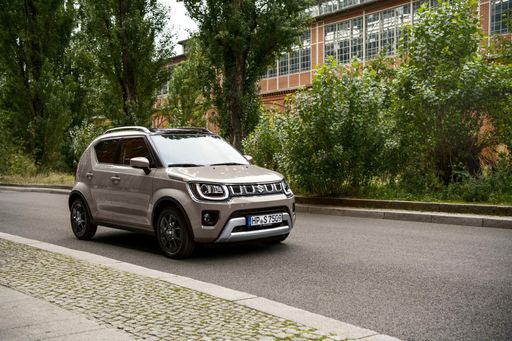 @ Suzuki
@ Suzuki
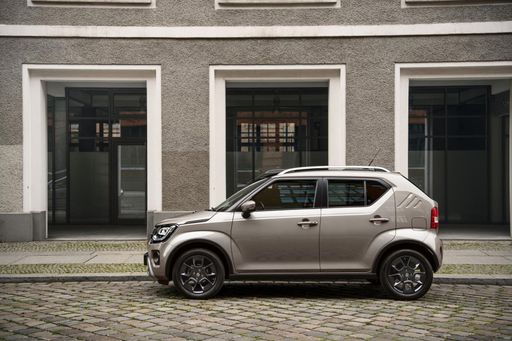 @ Suzuki
@ Suzuki
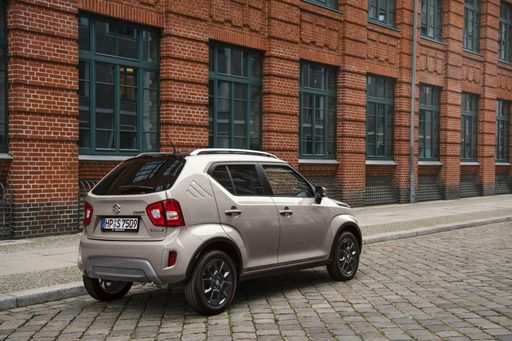 @ Suzuki
@ Suzuki
 @ Suzuki
@ Suzuki
Toyota C-HR
The Toyota C-HR stands out with its distinctive and bold design that combines sleek, angular lines with a sporty posture. Its comfortable and stylish interior is equipped with advanced technology features, providing a seamless driving experience. The vehicle offers impressive handling and performance, making it a compelling choice for those who appreciate a blend of practicality and flair on the road.
details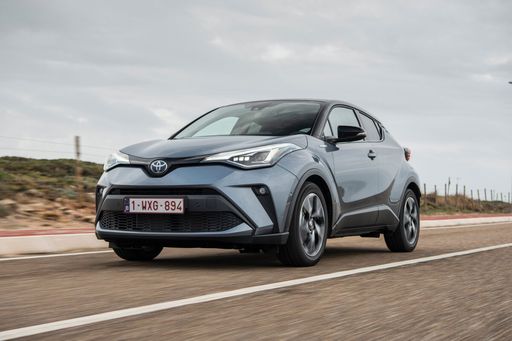 @ Toyota
@ Toyota
 @ Toyota
@ Toyota
 @ Toyota
@ Toyota
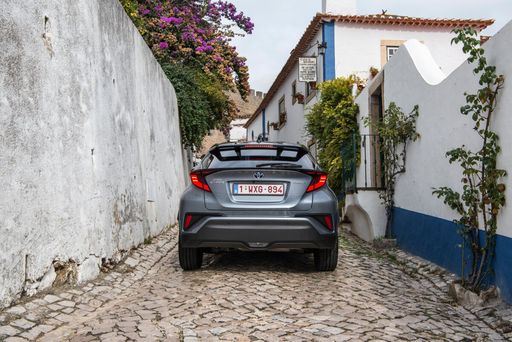 @ Toyota
@ Toyota
 @ Toyota
@ Toyota

|

|
|
|
|
Costs and Consumption |
|
|---|---|
|
Price
15600 - 19500 £
|
Price
29100 - 42800 £
|
|
Consumption L/100km
4.9 - 5.4 L
|
Consumption L/100km
0.8 - 5.1 L
|
|
Consumption kWh/100km
-
|
Consumption kWh/100km
-
|
|
Electric Range
-
|
Electric Range
68 km
|
|
Battery Capacity
-
|
Battery Capacity
-
|
|
co2
110 - 122 g/km
|
co2
17 - 115 g/km
|
|
Fuel tank capacity
30 - 32 L
|
Fuel tank capacity
43 L
|
Dimensions and Body |
|
|---|---|
|
Body Type
SUV
|
Body Type
SUV
|
|
Seats
4 - 5
|
Seats
5
|
|
Doors
5
|
Doors
5
|
|
Curb weight
935 - 995 kg
|
Curb weight
1505 - 1755 kg
|
|
Trunk capacity
204 - 267 L
|
Trunk capacity
350 - 447 L
|
|
Length
3700 mm
|
Length
4362 mm
|
|
Width
1690 mm
|
Width
1832 mm
|
|
Height
1605 mm
|
Height
1558 - 1564 mm
|
|
Payload
335 - 395 kg
|
Payload
375 - 425 kg
|
Engine and Performance |
|
|---|---|
|
Engine Type
Petrol MHEV
|
Engine Type
Full Hybrid, Plugin Hybrid
|
|
Transmission
Manuel, Automatic
|
Transmission
Automatic
|
|
Transmission Detail
Manual Gearbox, CVT
|
Transmission Detail
CVT
|
|
Drive Type
Front-Wheel Drive, All-Wheel Drive
|
Drive Type
Front-Wheel Drive, All-Wheel Drive
|
|
Power HP
83 HP
|
Power HP
140 - 223 HP
|
|
Acceleration 0-100km/h
12.7 - 12.8 s
|
Acceleration 0-100km/h
7.4 - 9.9 s
|
|
Max Speed
155 - 165 km/h
|
Max Speed
175 - 180 km/h
|
|
Torque
107 Nm
|
Torque
-
|
|
Number of Cylinders
4
|
Number of Cylinders
4
|
|
Power kW
61 kW
|
Power kW
103 - 164 kW
|
|
Engine capacity
1197 cm3
|
Engine capacity
1798 - 1987 cm3
|
General |
|
|---|---|
|
Model Year
2020
|
Model Year
2024 - 2025
|
|
CO2 Efficiency Class
C, D
|
CO2 Efficiency Class
C, B
|
|
Brand
Suzuki
|
Brand
Toyota
|
Suzuki Ignis
Introducing the Suzuki Ignis: A Compact SUV Marvel
The Suzuki Ignis, with its distinctive compact SUV design, seamlessly combines style, practicality, and a hint of adventure. This versatile vehicle is the epitome of efficient urban motoring, boasting impressive attributes while maintaining a pocket-friendly appeal. Let's delve into what makes the Ignis a remarkable choice for urban drivers and adventure enthusiasts alike.
Innovative Mild-Hybrid Technology
At the heart of the Suzuki Ignis is its innovative Mild-Hybrid technology, which pairs a 1.2-litre Dualjet petrol engine with an integrated electric motor. This combination promotes a seamless driving experience with reduced emissions and better fuel efficiency. The engine delivers a respectable 83 PS (61 kW), with a smooth power output that's perfect for navigating busy city streets or winding country roads, ensuring you get the best of both worlds in performance and eco-friendliness.
Versatile Drivetrain Options
Drivers can choose between manual and automatic transmission options to suit their driving preferences. For those seeking added stability and control, the Ignis also offers an ALLGRIP all-wheel-drive system that promises enhanced traction under challenging conditions. Whether you favour a traditional manual gearbox or prefer the ease of an automatic, the Ignis provides flexibility to match your lifestyle.
A Perfect Blend of Performance and Efficiency
With an impressive consumption range of 4.9 to 5.4 L/100km, the Ignis manages to balance performance and efficiency effectively, leading to reduced running costs and a lesser environmental impact. This makes it an ideal companion for both urban and rural commutes, delivering an engaging driving experience with low fuel consumption.
Compact Yet Spacious Design
Despite its compact dimensions (3700 mm in length, 1690 mm in width, and 1605 mm in height), the Suzuki Ignis does not compromise on space. It boasts a practical five-door layout, accommodating up to five passengers comfortably. The boot offers a capacity ranging from 204 to 267 litres, ensuring that you have ample space for luggage or shopping, whether you're heading for a weekend getaway or a day in the city.
Attention to Safety and Comfort
The Suzuki Ignis places a strong emphasis on safety, equipped with several driver assistance features and an efficient braking system, ensuring peace of mind on every journey. Inside, the cabin is designed for comfort, with high-quality materials and user-friendly technology, creating an inviting atmosphere for both driver and passengers.
Economical Ownership
Owning a Suzuki Ignis is not only attractive from a driving perspective but also in terms of running costs. With monthly expense estimates between €673 and €751 and competitive cost per kilometre, the Ignis stands out as a cost-effective option for the budget-conscious driver. It also holds a favourable position in CO2-efficiency classes, further reinforcing its status as an economical choice.
Final Thoughts
The Suzuki Ignis is more than just a car; it's a modern-day companion designed for those who value efficiency, practicality, and style without sacrificing performance. Whether navigating through urban landscapes or tackling country roads, the Ignis offers reliable functionality complemented by advanced features. It is a testament to Suzuki's ongoing innovation and commitment to meeting the demands of today's drivers.
Toyota C-HR
Revolutionising the Crossover Segment: The Toyota C-HR
The Toyota C-HR has firmly established itself as a standout contender in the compact crossover segment. Known for its distinct design and hybrid capabilities, the C-HR continues to prioritise innovation and efficiency. In this article, we delve into the technical details that make the 2024 iteration a compelling choice for discerning buyers.
Distinctive Design and Aerodynamics
The Toyota C-HR boasts a striking design that combines angular lines with modern aesthetics. This isn't merely for show; the design enhances aerodynamics, improving fuel efficiency and handling. With dimensions of 4362mm in length and a sophisticated structure, the C-HR strikes a balance between urban agility and on-road stability.
Impressive Hybrid Powertrains
The C-HR lineup offers innovative hybrid and plug-in hybrid drivetrain options. The full hybrid system is tailored for those who seek both economic and environmental benefits. It combines a petrol engine with an electric motor to deliver power outputs ranging from 140 to 223 PS, achieving remarkable fuel consumption rates from 0.8 to 5.1 L/100km. The 2.0 Plug-In Hybrid variant impresses with an electric range of 67 km, ideal for urban commuters.
Unmatched Efficiency and Performance
Acceleration figures for the C-HR range from 7.4 to 9.9 seconds to reach 0-100 km/h, ensuring a responsive driving experience. Maximum speeds between 175 and 180 km/h cater to those who appreciate a bit of zest on the open road. Coupled with CVT automatic transmission and both front-wheel and all-wheel-drive configurations, the C-HR adapts to various driving conditions with ease.
Advanced Technology and Features
Inside, the C-HR is equipped with the latest technology aimed at providing connectivity and comfort. The model hosts an array of features across its diverse trim levels, including Business Edition, Lounge, and the sporty GR SPORT. Each variant is designed to meet the demands of different lifestyles, ensuring there's a C-HR model to suit every taste.
Sustainability and Cost Efficiency
With CO2 emissions ranging from 19 to 115 g/km, the C-HR stands as a testament to Toyota's commitment to sustainability. Financially savvy consumers will also appreciate the running cost, with monthly expenses from €959 to €1204, and a cost per km as low as 38.4 cents. Such efficiency makes the vehicle an attractive option for eco-minded buyers.
Conclusion: A Forward-Thinking Choice
The 2024 Toyota C-HR embodies Toyota's forward-thinking approach to automotive innovation, blending eco-friendly hybrid technologies with stylish design and practicality. It offers a glimpse into the future of driving, where efficiency meets elegance. Whether you're a city dweller or an adventure seeker, the C-HR promises a driving experience that is both enjoyable and environmentally conscious.
Which drive types are available for the Suzuki Ignis?
Available as Front-Wheel Drive or All-Wheel Drive.
The prices and data displayed are estimates based on German list prices and may vary by country. This information is not legally binding.
